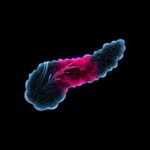What is already known
The rates of SARS-CoV-2 infection in healthy children are lower than in adults, and the youngest of them show milder symptoms. Many studies have been devoted to the search for an explanation and it has been postulated that the airway microbiota may play a role in these differences.
What this research adds
A new study revealed that children may be more resistant to SARS-CoV-2 infection due to differences in their upper respiratory tract (URT) microbiota, which is enriched in Moraxella in younger children.
Conclusions
Moraxella may be involved in protecting children from COVID-19 infections through its action on amino acid and lipid metabolism in the upper respiratory tract.
A pilot study, published in Microbial Pathogenesis, revealed that children may be more resistant to SARS-CoV-2 infection due to differences in their upper respiratory tract (URT) microbiota. In particular, the study found that the microbiota of URTs of healthy children is enriched in Moraxella compared to that of adults.
Correlation between Microbiota and COVID-19
Coronavirus disease 2019 (COVID-19) is an infectious disease caused by the SARS-CoV-2 virus, which is able to colonise the upper respiratory tract (URT) and thus cause respiratory symptoms. During these pandemic years, it has been observed that infection rates in healthy children are below those in adults and that the youngest children also show milder symptoms. Therefore, many studies have been devoted to finding an explanation for this phenomenon and it has been hypothesised that the microbiota of the airways may also play a role in these differences, as it is known that viruses and bacteria can interact with each other.
For example, recent studies have found that in patients infected with SARS-CoV-2 the microbiota profile of the URT is characterised by the presence of Acinetobacter, Chryseobacterium, Burkholderia, Brevundimonas, Sphingobium and Enterobacteriaceae. Therefore, it was hypothesised that the respiratory tract microbiota of healthy children may have a different composition, which plays a role in the lower incidence of COVID-19 cases in this population. Indeed, URT represent a first line of defence of the respiratory system against pathogens.
Does Moraxella have a protective effect against COVID-19?
A new study explored the composition of the URT microbiota in healthy children and adults by sequencing 16S rDNA from nasal and pharyngeal swabs. Although no significant differences were found in the throat, these were present in the composition of the nasal microbiota, which in healthy children appears to be dominated by Moraxella.
A previous study had analysed the microbiota of children during the early stages of infection and confirmed that, Moraxella was the most represented bacterium. Previous studies had also reported fewer respiratory infections in children with nasopharyngeal colonisation of Moraxella.
In support of these observations, it was noted that the proportion of Moraxella decreased in patients who died of COVID-19, compared to patients with a favorable outcome who were asymptomatic or negative. One explanation might lie in the fact that the SARS-CoV-2 entry receptor can be suppressed by the commensal human microbiota. Another consideration, which confirms the previous ones, is that metagenomic analysis of RNA sequencing data showed a significant decrease in commensal bacteria as the number of days of COVID-19 infection increased. Furthermore, it is known that Moraxella can influence the respiratory tract immune system and its presence is inversely correlated with markers of inflammation, as other studies have already shown.
Therefore, it can be argued that Moraxella may play a protective role against COVID-19 in children.
Moraxella’s possible protective mechanisms
To explore the possible mechanisms of the protective effect of Moraxella, the researchers of this new study used the KEGG PATHWAY Database, one of the most important bioinformatics databases to perform functional analyses, set up by Kyōto University. The results showed that there are, indeed, differences in the pathways of lipid and amino acid metabolism in the nasal microbiota of children.
This observation corroborates the possible action of Moraxella on SARS-CoV-2, since it has already been demonstrated that polyunsaturated fatty acids control the function of the virus entry gateways, i.e., angiotensin-converting enzyme-2 and serine transmembrane protease-2. In addition, docosahexaenoic acid is involved in suppressing inflammation and increasing phagocytosis, and shows anti-inflammatory, vasodilator and anti-platelet action.
Regarding amino acids, it has been shown that tryptophan and arginine metabolism is significantly associated with the clinical severity of COVID-19. It has also been observed that deprivation of all or a single essential amino acid can upregulate the expression of the ACE2 receptor, such as leucine deprivation the expression of ACE2 by transcription factors.
Conclusions
Thus, the presence of Moraxella could be inversely correlated with markers of inflammation and linked to amino acid and fatty acid metabolic pathways. The protective mechanisms of this bacterium against COVID-19 in children should therefore be sought in these pathways.
However, Further studies will be needed to confirm this hypothesis and to understand the protective mechanisms in detail.









